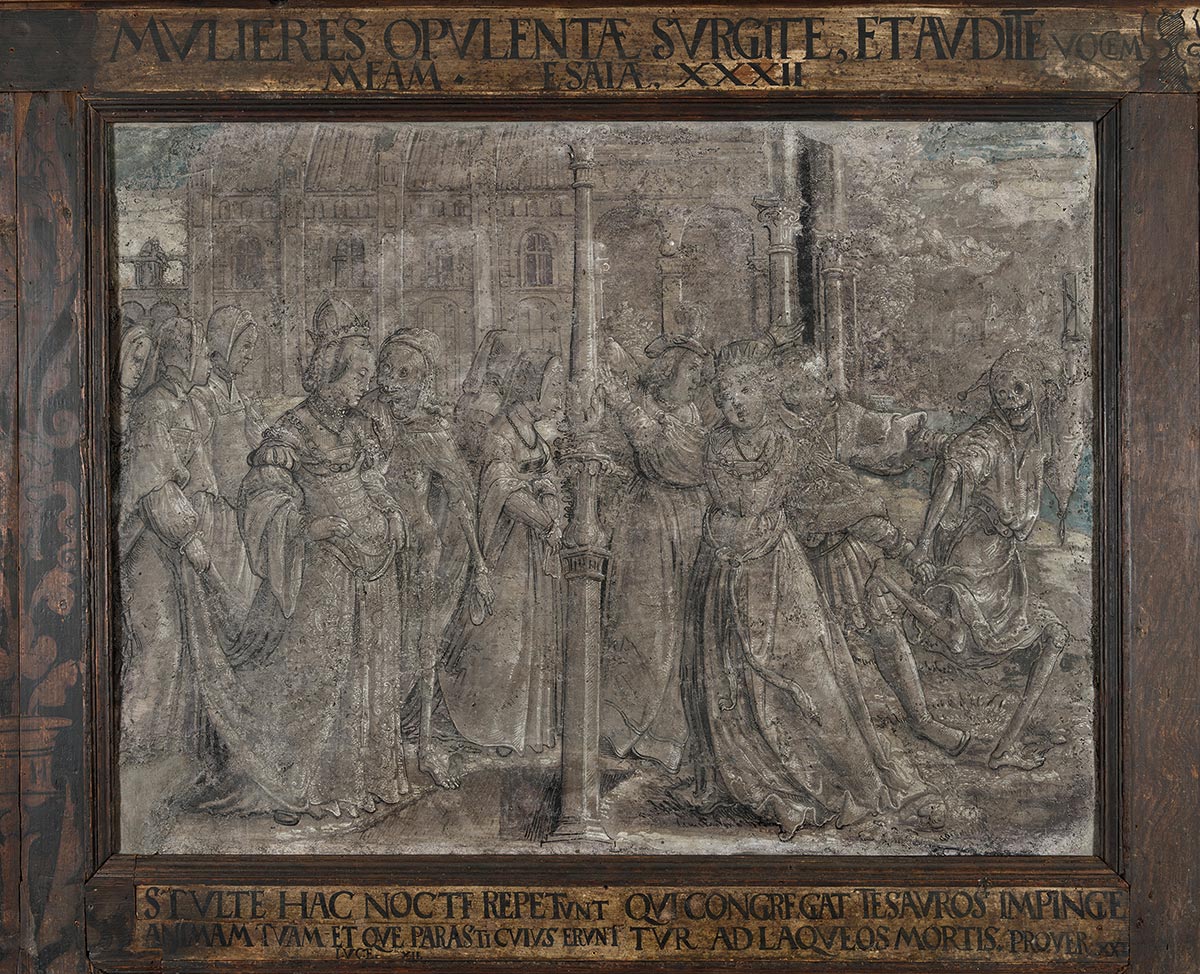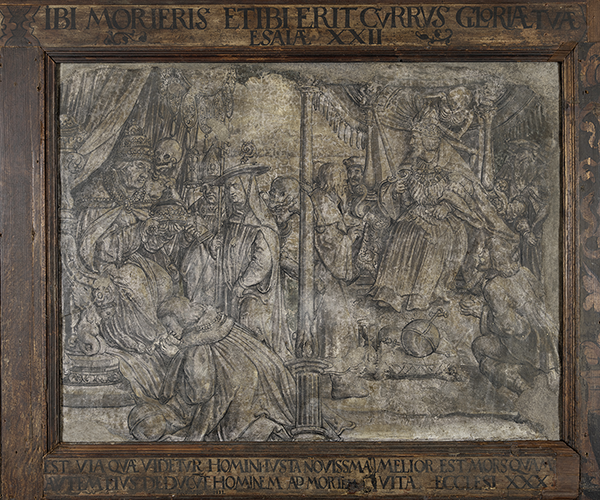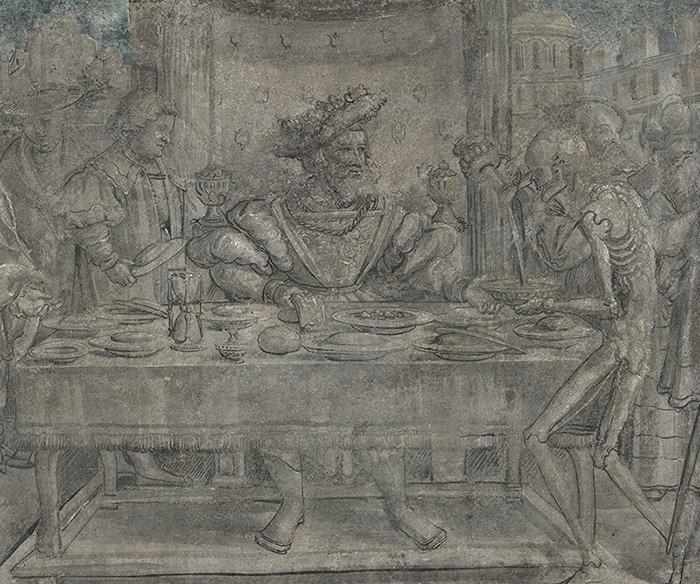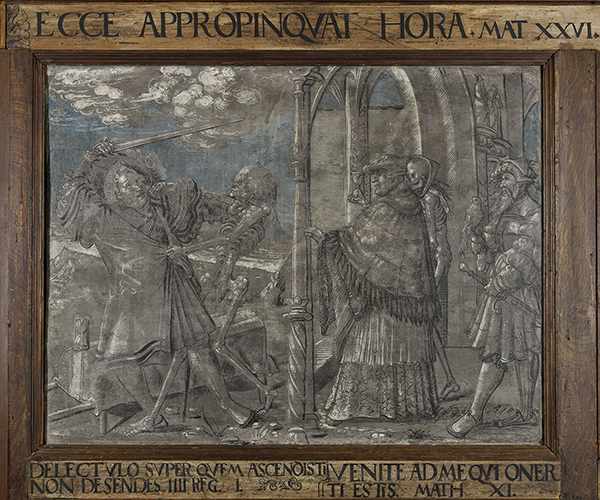
Images of Death or Dance of Death?
The Chur Images of Death
The cycle of death images from 1543 consists of 25 painted picture fields on a half-timbered wall with three registers. The depictions show encounters of people with death. They are executed as grisailles, i.e. the painter used mainly grey, black and white tones. In the base zone there are animals behind barred arches. The Chur images of death are in the tradition of medieval death dances. In these pictures, cycles people of all classes and ages are confronted with death. Death has the shape of a skeleton that dances and often makes music. However, the Chur pictures do not show Death dancing with people, but how it surprises them in everyday life and takes their lives by surprise. This is the reason why Chur is not a dance of death, but a painting of death.They go back to the woodcut series with the Images of Death by Hans Holbein the Younger and are the first large-format copies of those small prints from the time before 1526.
The Chur images of death are an independent work of high artistic quality. Apart from the two depictions of death from around 1520 to 1530 in the charnel house in Leuk, this is the oldest surviving cycle in the tradition of death dances in Switzerland. It is completely preserved with the exception of the scene of the abbess. The motifs have neither been painted over nor whitewashed.


